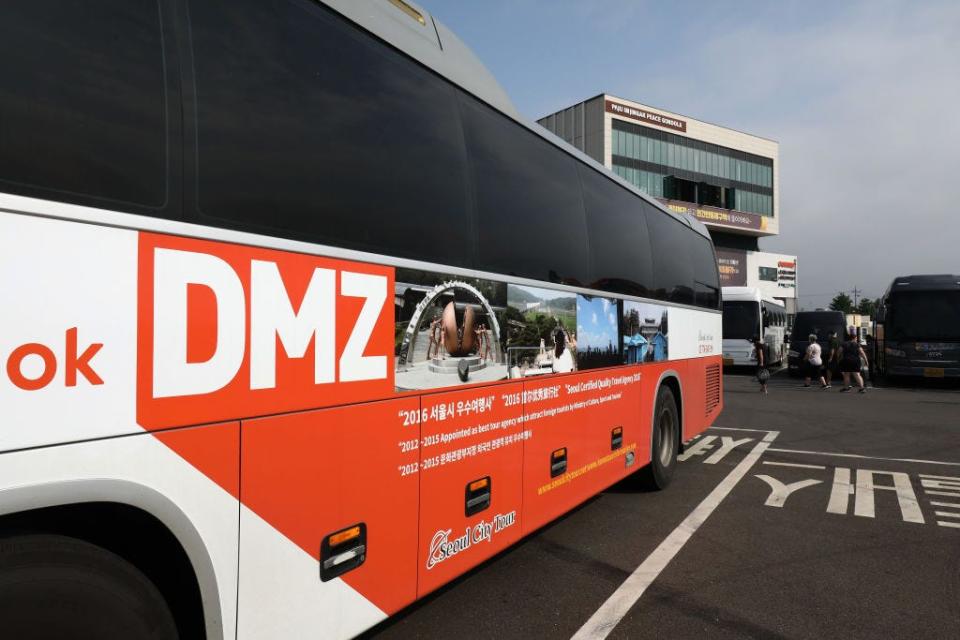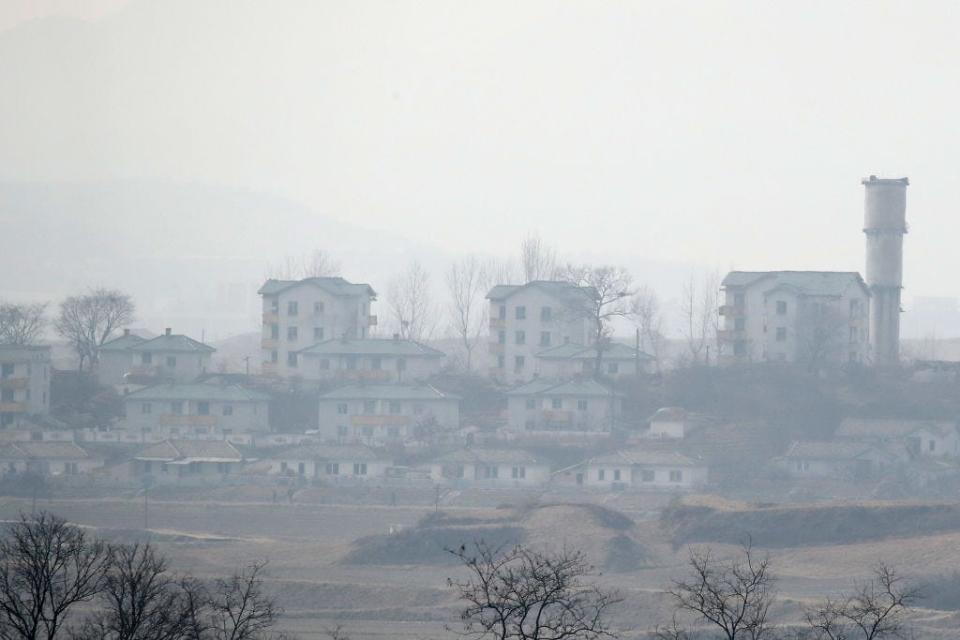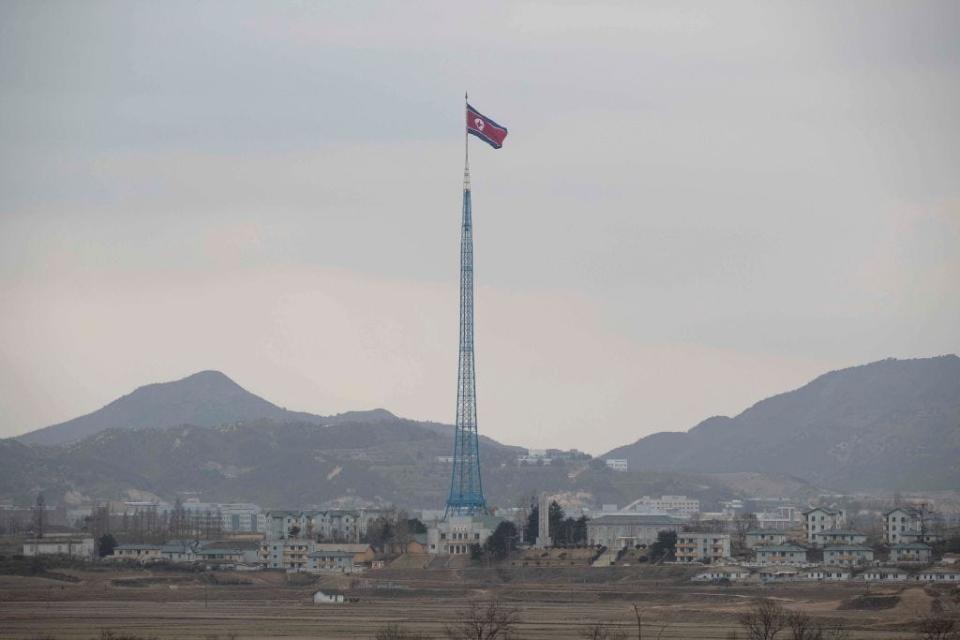See inside the Demilitarized Zone, the heavily guarded border between North Korea and South Korea

The Demilitarized Zone established after the Korean War separates North Korea and South Korea.
North Korean and South Korean soldiers, as well as United Nations Command forces, guard the site.
Despite being one of the most heavily guarded borders in the world, it's also a tourist attraction.
In 1953, an armistice agreement established a Demilitarized Zone (DMZ) on the border of North Korea and South Korea. While the agreement brought an end to the battles of the Korean War, the conflict is still ongoing.
Tensions remain high between the two countries. On multiple occasions earlier this year, North Korean leader Kim Jong Un tested new rockets capable of hitting Seoul in South Korea. In December, Kim said his army should "thoroughly annihilate" South Korea and the United States, if provoked, the Associated Press reported.
Take a look inside the heavily fortified border between North and South Korea.
The Korean Armistice Agreement of 1953 divided North and South Korea along the 38th parallel and established a Demilitarized Zone at the border.

At 148 miles long and 2.5 miles wide, the strip of land includes territory from both North and South Korea and acts as a buffer between the two countries.
The Joint Security Area of the Demilitarized Zone is managed by North Korea and the United Nations Command.

The United Nations Command was established when the Korean War began in 1950 as a multinational force made up of 22 countries supporting South Korea, according to its official website. The UN Command continues to enforce the armistice agreement and aid efforts to maintain peace in the region.
Despite being one of the most heavily guarded borders in the world, it is also a popular tourist attraction.

Located about 30 miles north of Seoul, the DMZ is open to visitors who book organized tours. In 2019, CNN reported that 1.2 million people visit the site each year, citing figures from the Korea Tourism Organization.
In the Joint Security Area, also known as Panmunjom or Truce Village, a monument memorializes the casualties that led up to the 1953 armistice agreement.

"On July 27, 1953, in the small building approximately 1000 meters to the front of this marker, representatives of the United Nationals Command, the Korean People's Army, and the Chinese Peoples Volunteers signed a Military Armistice agreement that brought the Korean War to a halt," the plaque reads.
The plaque adds that the Republic of Korea lost 150,000 soldiers and the United Nations Command suffered 40,000 casualties.
The room where the agreement was signed is also open to view.

One of the tables displays flags from the United States, South Korea, and the United Nations.
North Korean soldiers watch closely from outside.

By walking around the conference table inside the building, tourists can say they have, technically, been in both North and South Korea.
Soldiers on South Korea's side of the DMZ stare into North Korea.

Tourists visiting the site are instructed not to wave or point at North Korean soldiers and to only take photographs when instructed.
North Korea stares right back.

North Korea offers its own tours of the DMZ. Travis Jeppesen, the first American to complete a university program in North Korea, wrote in his 2018 book, "See You Again in Pyongyang: A Journey into Kim Jong Un's North Korea," that the tour is surprisingly less tense on the North Korean side with no strict rules about how to interact with soldiers on the other side.
The Military Demarcation Line is indicated by a block of concrete.

In the above photo, North Korea is on the left and South Korea is on the right.
Nearby, at the Goseong Unification Observatory Tower, visitors can use binoculars to look into North Korea.

The Goseong Unification Observatory Tower is the northernmost observation point in South Korea.
North Korea has built what South Korean forces call a "propaganda village" near the border.

Known as "Peace Village" on the North Korean side, the buildings appear to be empty. The village was built in an attempt to encourage defectors from the South to join the North.
North Korea also flies its flag on a 525-foot flagpole across from the Demilitarized Zone — a symbol of the still-simmering tensions between the two countries.

When South Korea constructed a flagpole that was 321.5 feet high in the 1980s, North Korea built a taller one at 525 feet, the BBC reported.
Read the original article on Business Insider


